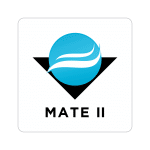SeaMATE Underwater Robotics
Course Description
The Angelfish ROV is a basic, beginner ROV designed to introduce students to ROV building. It is most appropriate for elementary and middle school students with little to no background in electronics. The Angelfish uses a simple switch box with no other electronics.
Lecture hours: 5
Lab hours: 15
The Pufferfish ROV is a beginner/intermediate ROV designed to build upon the lessons learned with the Angelfish ROV. It is most appropriate for middle school students and high school students just starting out in robotics. The Pufferfish ROV is a switch box ROV, but students solder electronic components (resistors, LEDs, etc.) onto a printed circuit board.
Lecture hours: 8
Lab hours: 20
The Triggerfish ROV is an intermediate ROV designed to build upon the lessons learned with the Pufferfish ROV. It is most appropriate for middle school students experienced with robotics and high school students. Switches are replaced by joysticks, allowing analog speed control. Additional components must be soldered onto printed circuit boards.
Lecture hours: 10
Lab hours: 25
The Barracuda ROV is an advanced ROV designed to build upon the lessons learned with the Triggerfish ROV. It is most appropriate for high school students experienced with robotics and programming and community/technical college and university students in introductory STEM courses. The Barracuda moves from analog controls to digital controls. An Arduino can be used to program movement, interpret sensor data, comes with relays for further control, and has a Bluetooth module incorporated.
Lecture hours: 10
Lab hours: 30
Lecture hours are narrated presentations.
Links to purchase kits and lab activities are included in the courses. For example, links to kits for learning to solder wires as well as solder printed circuit boards are included in the course materials. Learning Outcomes
NEXT GENERATION SCIENCE STANDARDS (NGSS)
NGSS Engineering Design 3-5-ETS1-1/2/3/4; HS-ETS1-1/2/3/4
NGSS Energy 4-PS3-2/4:
NGSS Motion and Stability: Forces and Interactions 3-PS2-1:
COMMON CORE
Common Core ELA/Literacy RST.6-8.3, SL.8.5
Common Core ELA/Literacy RST.11-12.8/9
Common Core Mathematics MP.2/4/5/6
Common Core Mathematics 3.MD.A.2
INTERNATIONAL SOCIETY FOR TECHNOLOGY IN EDUCATION (ITSE)
ITSE 1 Empowered Learner
ITSE 4a, b, c, d Innovative Designer
ITSE 5d Computational Thinker
P21 PARTNERSHIP FOR 21ST CENTURY LEARNING
P21 Creativity and Innovation
P21 Critical Thinking and Problem Solving
P21 Communication and Collaboration
Basic Skill Requirements

MATE Inspiration for Innovation
Instructor
Course Features
- Lecture Hours
- Lab Hours
- Credits
- Certification
- Language
- NSF ATE Funded
- 5-10
- 15
- 0
- None
- English
- Yes
